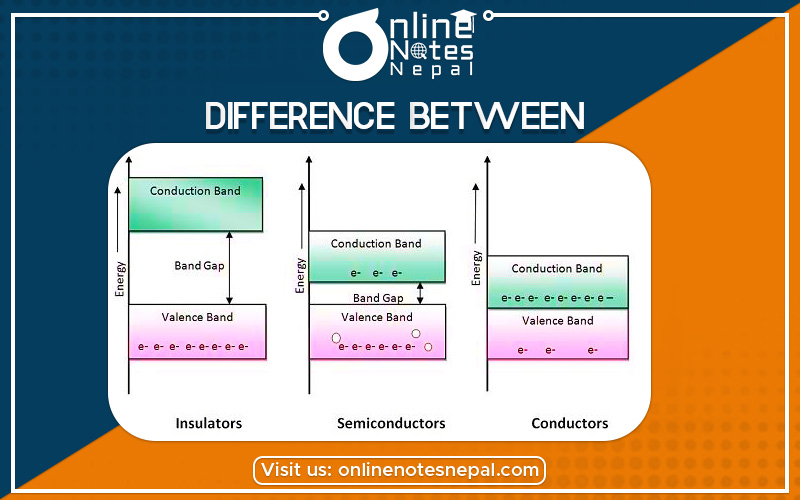Published by: Zaya
Published date: 26 Jun 2021

The major difference between conductor, insulator, and semiconductor is defined by the flow of charged particles under the influence of the electric field. When any voltage is applied to the conductor, electrically charged particles easily flow from valence band to conduction band. Thus the conductor is a good conductor of electricity. A semiconductor allows very low charge particles to move from valence band to conduction band. In insulators, there is no flow of charged particles under the influence of electric field hence insulators are the bad conductor of electricity.
In conductors, the valence band and conduction band overlapped each other thus under the influence of the electric field the charge carriers easily move to the conduction band, and this results in easy flow of current. In Insulators the energy gap is very high, there is no flow of electric charge, whereas in the semiconductor the valence band and the conduction band are separated by very less eV thus charge carrier flow is very less, and current will be very less.
The flow of charge carriers decides the material, if the charge carriers flow easily under the influence of the electric field, then they are called as a conductor, the material in which charge carriers do not flow easily then they are called as insulators while the material whose conductivity lies between conductor and insulators are called as a semiconductor.
In conductors, the valence band and conduction band are nearly close to each other thus energy gap Eg=0, In insulators the energy band gap is very high given by Eg=6eV whereas in semiconductor Fermi level lies between the valence band and conduction band, the valence band and conduction band are separated by the energy gap of 0.1eV.
In the case of conductors, resistance depends on the temperature thus resistivity increases with temperature hence having a positive temperature coefficient of the resistance, which is inversely proportional to the conductivity thus conductivity decreases, while insulators are having a negative temperature coefficient of resistance similar to insulator semiconductor is also having a negative temperature coefficient of resistance hence increases conductivity.
In the conductor, current flows because of negatively charged carriers called electrons. In Insulator there is no flow of charged particles, In semiconductor the current flow because of the movement of holes and electrons, if the semiconductor gains energy either because of thermal agitation or by doping then the electrons can easily move from valence band to conduction band which left behind the vacant position in the valence band which is acquired by another electron which in turn leaves behind a vacancy, this vacancy in the valence band is positively charged called as the hole. The direction of holes flow is opposite to the direction of electrons flow.
In conductors the current flow because of electrons, therefore the charge carriers are very high, for insulators, there is no free charge carrier, In a semiconductor, the number of charge carriers is very less.
By providing temperature to the conductor, the number of charge carriers decreases while for insulators and semiconductors the charge carriers increase.
By adding an impurity to the conductor the resistance increases which in turn decreases the conductivity. In insulators, there is no effect of adding the impurity to them, whereas semiconductor is classified as intrinsic semiconductor and extrinsic semiconductor. The pure form of the semiconductor is an intrinsic semiconductor that has high resistivity when the impurity is added to the intrinsic semiconductor then extrinsic semiconductor is obtained which is further classified as an n-type semiconductor and a p-type semiconductor. The resistance of semiconductors decreases by adding an impurity to them.
At absolute zero temperature conductors behave like superconductors, Superconductors are materials that do not contain any resistivity and conduct electricity as there is no resistivity hence having infinite conductivity without losing any energy. At absolute zero temperature, the insulator and semiconductor behave like an Insulator.
The conductor has an ionic bond between the atoms. An Ionic bond is formed by two oppositely charged ions. The oppositely charged particles are obtained by the transfer of valence electrons between atoms. In Insulator the bond formation is either an ionic bond or a covalent bond. In a semiconductor, there is covalent bond exists between the atoms this covalent bond is formed by sharing of electrons between them.
The crucial difference between conductor, insulator, and semiconductor is that the conductivity of semiconductors lies between the conductivity of insulator and conductor.